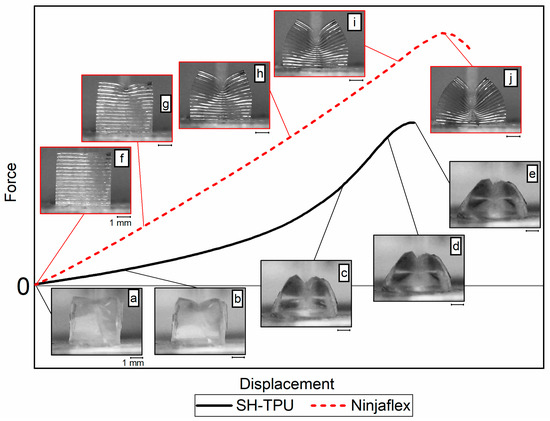3D printing of self-healing polymers aims to extend the life of products by repairing damages such as cracks and scratches, and also has the potential to increase part quality and durability. Thermoplastic polyurethanes (TPU) have attracted significant attention in the field of self-healing polymers as a result of their room-temperature healing capabilities and decent mechanical properties, however in the past healing has mostly been achieved through hydrogen bonding.
Now, researchers from the Delft University of Technology have developed a process to 3D print room temperature self-healing TPU (SH-TPU) using fused deposition modeling (FDM). Reportedly, the SH-TPU used in the study displayed less mechanical dependence on printing conditions in comparison to a 3D printed commercial TPU, and also had the added value of healing damages at room temperature.

3D printing self-healing polymers
The self-healing properties of biological tissues such as skin and tendons are also desirable in 3D printing, and the ability to integrate similar features into flexible polymer printing materials could potentially open up brand new areas to additive manufacturing in terms of soft robotics and consumer electronics, among other things. Research within this field is rapidly increasing, although achieving these desired characteristics through 3D printing has proved difficult thus far.
Progress has been made in the past, though, after the successful printing of a biopolymer made from shrimp that could unlock self-healing wearable devices, and the development of 3D printed self-healing smartphone and computer screens. There have even been predictions that transforming, self-healing drones and aircraft could become a reality within the next couple of decades.
More recently, researchers at the University of Southern California have developed a 3D printed rubber material capable of repairing itself that could increase the longevity of shoes, tires, soft robotics, and electronics, while a team from Lamar University has used stereolithography (SLA) to print cacti-inspired structures equipped with autonomic self-repair.
Elsewhere, scientists from Taiwan’s National Central University created a UV and heat resistant self-healing emulsion glass, and a collaboration between Texas A&M University and the US Army Research Laboratory saw the development of a new family of recyclable, self-healing polymeric 3D printing materials.

FDM printing of SH-TPU
For their study, the Delft researchers sought to produce and mechanically test a method for the 3D printing of low-temperature SH-TPU using FDM. First, the SH-TPU was synthesized as a polymer slab and then processed into a 3D printable filament before being successfully printed on a modified Ultimaker 2+. The machine’s print head was replaced with an E3D Titan extruder and an additional fan was installed to help the material maintain stability after exiting the nozzle. G-codes files for printing were then generated using Ultimaker’s CURA software to print rectangular blocks measuring 20x10x4mm.
The SH-TPU samples were printed at three different print-head temperatures; 225, 230, and 235 degrees celsius. Those printed at 230 degrees were deemed the best quality based on visual inspection. The researchers evaluated the mechanical properties of the 3D printed samples using a compression-cut test, and also observed their self-healing behavior by creating a controlled cut and testing the mechanical behavior of the healed samples.
During the healing process, the cut samples were left in an oven at 30 degrees celsius for 24 hours. According to the researchers, the ability of the SH-TPU to fully heal cut-through damages and recover fracture resistance properties was fully demonstrated during the study.

Retaining self-healing ability
The researchers observed large variations in the SH-TPU filament diameter which resulted in an uneven polymer deposition during printing, which reduced print quality. However, they believe this can be optimized going forward, and despite this, the SH-TPU showed very low void distance and maintained its full shape integrity. According to the scientists, this shows the potential of self-healing polymers to obtain high-quality 3D printed parts with no obvious detection of the filaments that built the sample.
Moreover, the SH-TPU completely retained its self-healing ability after the 3D printing process and totally restored its mechanical behavior. According to the researchers, extrusion-based 3D printing of self-healing polymers has mostly focused on liquid deposition modeling (LDM) printing of hydrogels and temperature-reactive polymers based on reversible covalent bonds. As such, little attention has been placed on the printing of SH-TPU at moderate or near room temperature due to their high melt adhesion and viscosity characteristics which make their processability difficult.
However, as the researchers identified, their favorable healing capabilities and the large amount at which they can be produced make them good candidates to explore FDM-printed self-healing polymers.
Further details of the study can be found in the paper titled “3D Printing of a Self-Healing Thermoplastic Polyurethane through FDM: From Polymer Slab to Mechanical Assessment” published in the Recent Advances in Self-Healing Polymers journal. The paper is co-authored by L.Ritzen, V. Montano, and S. Garcia.
Subscribe to the 3D Printing Industry newsletter for the latest news in additive manufacturing. You can also stay connected by following us on Twitter and liking us on Facebook.
Be sure to subscribe to the Another Dimension podcast on your chosen podcast player to make sure you never miss an episode.
Looking for a career in additive manufacturing? Visit 3D Printing Jobs for a selection of roles in the industry.
Featured image shows pictures of the 3D printed SH-TPU samples of approximately 10 × 20 × 5 mm. Image via Recent Advances in Self-Healing Polymers.


